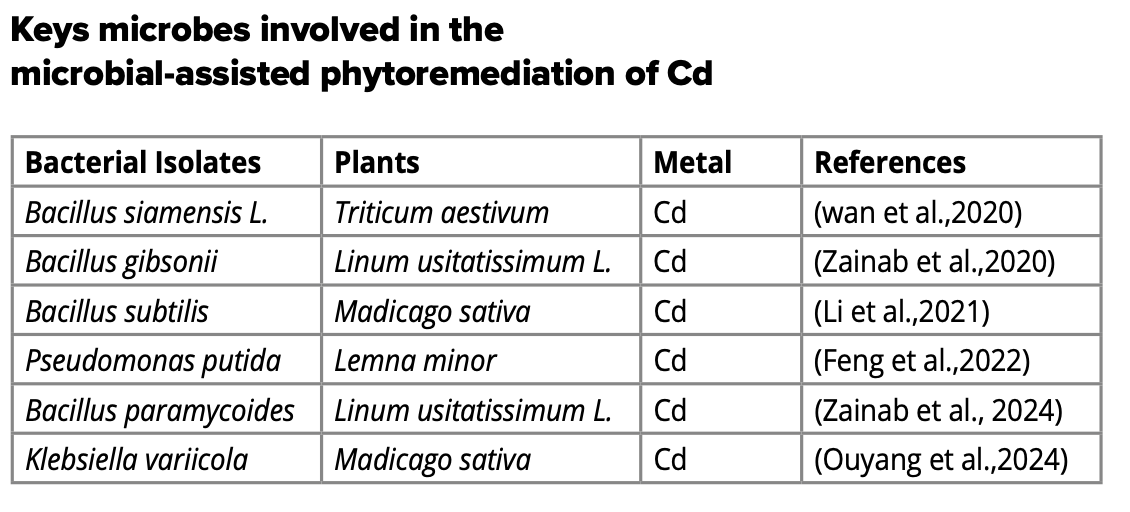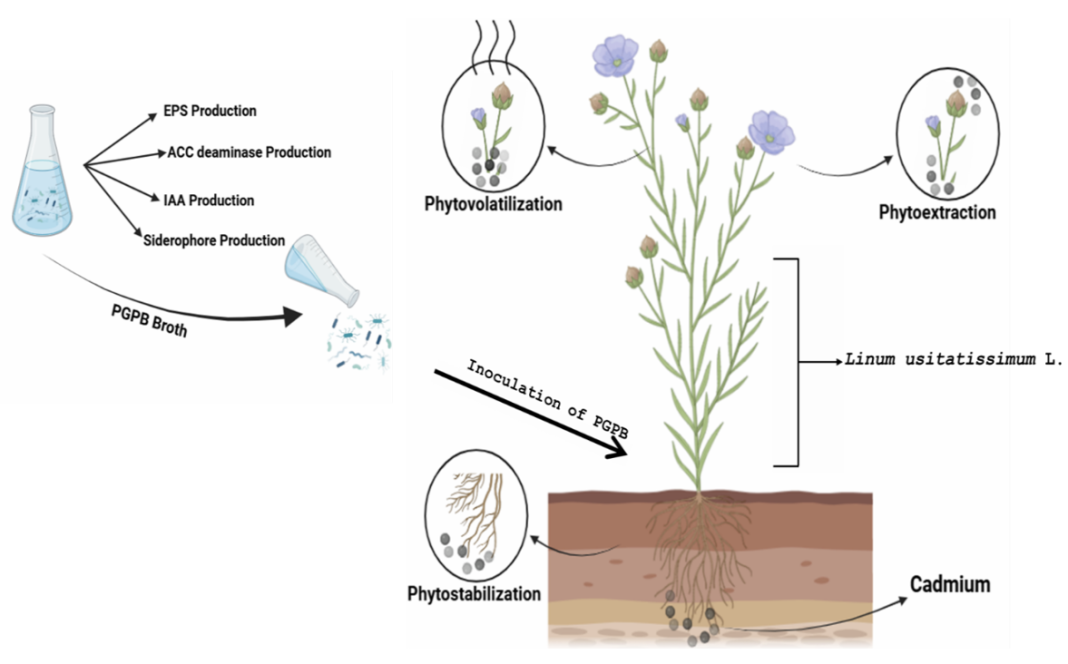Arpita Bose, PhD, Associate Professor and Nida Zainab, PhD Researcher at Washington University in St. Louis, guide us through the process of microbially-assisted phytoremediation of cadmium
Heavy metal contamination is an extremely dangerous problem that poses a serious risk to humans, plants, and ecosystems on a global scale. One of the most hazardous heavy metals is cadmium (Cd), which harms ecosystems by getting into the food chain. (1) Cd is a class-1 carcinogen, chronic nephrotoxic, and extremely hazardous heavy metal. (2) Plant growth, photosynthetic system loss, and cyto-membrane function are all negatively impacted by Cd assimilation. (3), (4) Long-term exposure to Cd can cause twisting and swelling of the terminals of roots, loss of roots and leaves, and inhibition of horizontal root formation. (5)
Additionally, Cd stress can impair several structural and morpho-physiological processes and metabolic processes in plants. (6), (7) Cost-effective methods must be introduced for the treatment of soil contaminated by Cd. Heavy metal contamination is remedied using a variety of techniques, including chemical (such as leaching and chelation), biological (such as microbial-assisted phytoremediation), and physical (such as electrokinetic remediation).
There is much interest in the bioremediation of hazardous metals in contaminated soils employing possible bacteria. (8) Because of its affordability and environmental friendliness, bioremediation is becoming the go-to technique for cleaning up heavy metal-contaminated soil and water. (9) These microorganisms are important partners in sustainable heavy metal remediation techniques because they increase Cd bioavailability, promote plant development, and lower metal-induced stress.
Phytoremediation, where plants and microbes work together to remediate contaminated soils
There are six different types of phytoremediation:
- Phytoextraction: Heavy metals can be removed and disposed of properly from the shoots that plants absorb and accumulate.
- Phytostabilization: Heavy metals in the soil are immobilized by plants and associated microorganisms, which lowers their mobility and bioavailability.
- Rhizofiltration: Heavy metals are absorbed, concentrated, and eliminated from contaminated water sources via plant roots.
- Phytovolatization: Metals are absorbed by plants and transformed into less hazardous volatile forms that are then released into the atmosphere.
- Phytodegradation: Organic pollutants are broken down into less dangerous compounds by plants and the bacteria that live there.
- Rhizodegradation: The breakdown of organic pollutants in soil is accelerated by microbial activity in the root zone.
Mechanism of microbially-assisted phytoremediation
The term “plant growth-promoting bacteria” (PGPB) refers to a wide range of species, such as free-living bacteria, bacteria that form particular symbiotic relationships with plants, bacterial endophytes that can colonize the insides of plants, and cyanobacteria, or blue-green algae. (10) Bacteria that promote plant growth have an impact on plant growth both directly and indirectly.
Direct mechanism
By a direct process, bacteria can supply plants with the iron (Fe), phosphorus (P), and nitrogen (N) that they require. (11) One of the most important nutrients for plant growth and development is nitrogen, or N2, which is present in the atmosphere but inaccessible to plants. (12) Through the action of a complex enzyme called nitrogenase, nitrogen- fixing bacteria continually transform atmospheric N2 into phyto-available forms like ammonia and nitrate. (13) Phosphate is a macronutrient for plants that is frequently found in an insoluble form that is unusable by plants. Bacteria that solubilize phosphate are essential for raising the amounts of P that plants can absorb.
Additionally, several microbes can reduce Fe3+ into Fe2+, which is easily absorbed by plants and essential for several metabolic processes. (14)
Siderophores are molecules produced by bacteria that bind to a variety of metals to increase their availability for plant uptake, including Fe. (15) Furthermore, bacteria provide plants with phytohormones, including gibberellins, cytokinins, and auxins, that boost plant growth and can protect plants against metal phytotoxicity. (16)

Indirect mechanism
Through the production of a variety of antibiotic compounds known as allelochemicals, which offer defense against infections, bacteria can indirectly promote plant development. Allelochemicals comprise siderophores, lytic enzymes, hydrogen cyanide (HCN), 1-aminocyclopropane- 1-carboxylate (ACC) deaminase, exopolysaccharide (EPS), indole-3-acetic acid (IAA) production and antibiotics. (17) PGPB secrete siderophores that chelate Cd and increase its bioavailability for plant uptake.
Additionally, microbial organic acids facilitate Cd solubilization and mobility. By binding and immobilizing metal ions, EPS-producing bacteria form biofilms around roots, lowering the toxicity of Cd. Exposure to Cd causes plants to produce stress ethylene, which stunts growth. This stress hormone is broken down by PGPB with ACC deaminase activity, which encourages plant development in the presence of metal stress.
Some PGPB have cyanogenic activity (HCN release), which exacerbates the effects of bacterial antibiotics, in addition to commonly serving as a biocontrol strategy. Lytic enzymes are known to prevent the growth of harmful fungi by breaking down the components of their cell walls. (18) These lytic enzymes, which include cellulases, chitinases, glucanases, and proteases, contribute to nutrient recycling through the breakdown of organic materials and biocontrol by raising nutrient availability. (19) Finally, siderophores limit the growth of infections by preventing pathogens from obtaining Fe, which helps with biocontrol. (20)
Conclusion: Towards environmental sustainability
Sustainable agriculture faces enormous challenges due to anthropogenic environmental pollution, particularly heavy metal contamination. Microbial bioremediation has recently attracted considerable attention as a potential solution to the problem of heavy metal pollution. With continued research and field application, microbially-assisted phytoremediation can be crucial in mitigating Cd pollution and ensuring environmental sustainability.


